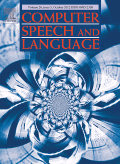
COMPUTER SPEECH AND LANGUAGE
Scope & Guideline
Advancing the Frontiers of Human-Computer Communication
Introduction
Aims and Scopes
- Speech Enhancement and Recognition:
The journal emphasizes research on improving speech recognition systems and enhancement techniques, particularly in challenging acoustic environments. This includes the development of algorithms for noise reduction and clarity in speech signals. - Natural Language Processing (NLP) and Understanding:
It covers the methodologies for processing and understanding human language, including sentiment analysis, dialogue systems, and text generation, focusing on how machines can effectively interpret and generate human language. - Multimodal Interaction and Human-Computer Interaction:
Research on integrating speech with other modalities (e.g., visual, tactile) to enhance human-computer interactions is a significant focus, exploring how users interact with technology through speech. - Machine Learning and Deep Learning Applications:
The journal extensively covers the application of machine learning and deep learning techniques to various speech and language tasks, including speech synthesis, emotion recognition, and cross-lingual processing. - Cognitive and Clinical Applications:
Research addressing cognitive aspects of speech processing and its clinical applications, such as detecting and analyzing speech patterns in conditions like dementia or Parkinson’s disease, showcasing the journal's commitment to real-world impact.
Trending and Emerging
- Deep Learning Innovations:
There is a growing trend in the application of deep learning methodologies, particularly in areas like speech enhancement, recognition, and synthesis, reflecting the rapid advancements in neural network architectures. - Emotion Recognition and Affective Computing:
Research focusing on detecting emotions through speech is on the rise, emphasizing the importance of understanding human emotions in interactions with AI systems and enhancing user experience. - Conversational AI and Dialogue Systems:
Papers exploring advancements in conversational agents and dialogue systems are increasingly prevalent, driven by the demand for more natural and context-aware interactions. - Multimodal Learning and Integration:
A trend towards integrating multiple modalities (e.g., audio-visual data) in speech processing research is emerging, indicating a shift towards more holistic approaches in understanding human communication. - Ethics and Privacy in Speech Technology:
Emerging concerns regarding ethics and privacy in speech technology applications are becoming crucial, with research focusing on secure and responsible AI implementations gaining importance.
Declining or Waning
- Rule-Based Approaches in Speech Processing:
There is a noticeable decrease in the publication of studies focused on traditional rule-based methods for speech processing, as the field increasingly favors data-driven and machine learning approaches. - Low-Resource Language Processing:
Although still relevant, the frequency of papers specifically dedicated to low-resource languages has diminished, possibly due to a shift towards more universally applicable models and languages with greater resources. - Traditional Acoustic Modeling:
Research centered around conventional acoustic modeling techniques is less prevalent, as newer methods leveraging deep learning and neural networks gain traction. - Basic Speech Signal Analysis:
Basic research focused on foundational speech signal analysis techniques appears to be waning, as the field progresses towards more complex and integrated approaches involving multimodal data.
Similar Journals
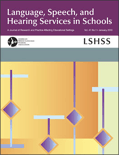
LANGUAGE SPEECH AND HEARING SERVICES IN SCHOOLS
Elevating speech and hearing services in schools.LANGUAGE SPEECH AND HEARING SERVICES IN SCHOOLS is a leading academic journal published by the American Speech-Language-Hearing Association, dedicated to advancing the fields of linguistics, speech, and hearing within the educational setting. With an ISSN of 0161-1461 and an E-ISSN of 1558-9129, this journal plays a pivotal role in disseminating peer-reviewed research that addresses critical issues faced by speech-language pathologists, educators, and researchers in schools. It has earned a distinguished reputation, ranking in the Q1 category for both Linguistics and Speech and Hearing in 2023, attesting to its impact and relevance in these fields. The journal seeks to publish original research, reviews, and evidence-based practices that improve speech and language services in educational contexts. Although it is not an open-access journal, it remains vital for professionals aiming to enhance communication disorders management in school environments. By bridging theoretical research and practical application, LANGUAGE SPEECH AND HEARING SERVICES IN SCHOOLS serves as an indispensable resource for advancing the scientific understanding of speech and language processing in educational settings.

JOURNAL OF INTELLIGENT INFORMATION SYSTEMS
Shaping the Future of Intelligent Systems ResearchThe Journal of Intelligent Information Systems, published by Springer since 1992, is a premier academic journal that offers a multidisciplinary platform in the fields of Artificial Intelligence, Computer Networks and Communications, Hardware and Architecture, Information Systems, and Software. With an impressive impact reflected in its 2023 Q2 category rankings across multiple domains and a commendable standing in the Scopus Rankings—ranking #84 in Computer Networks and Communications and #101 in Artificial Intelligence—the journal is recognized for its contribution to advancing knowledge and innovation. Although it is not an open-access journal, its accessibility through institutional subscriptions ensures that a wide range of researchers, professionals, and students can engage with high-quality, peer-reviewed research that addresses the latest advancements and trends in intelligent systems. For over three decades, this journal has effectively bridged gaps between academia and industry, making it a vital resource for those aiming to push boundaries in intelligent information systems.
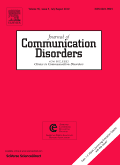
JOURNAL OF COMMUNICATION DISORDERS
Uncovering the Complexities of Speech and Hearing.Journal of Communication Disorders (ISSN: 0021-9924; E-ISSN: 1873-7994) is a leading publication in the field of communication disorders, published by Elsevier Science Inc. With a converged publishing timeline from 1967 to 2024, this journal has established itself as a vital resource for researchers, clinicians, and educators dedicated to advancing knowledge in areas such as linguistics, language processing, speech, and hearing. It boasts an impressive reputation, ranking in the Q1 category for Linguistics and Language, and Q1 in LPN and LVN as well as Q2 in Speech and Hearing for 2023, highlighting its influence and scholarly impact within these domains. The journal is recognized for its rigorous peer-reviewed articles and its contributions to our understanding of cognitive neuroscience, experimental psychology, and communication disorders—further evidenced by its ranking in the top percentiles in various fields. Although it does not currently offer Open Access options, readers and contributors alike will appreciate the depth and breadth of research published within its pages. This journal serves an essential role in bridging the gap between research and practical application, making it a must-read for anyone involved in the study or treatment of communication disorders.

Frontiers in Signal Processing
Shaping Tomorrow's Signal Processing LandscapeFrontiers in Signal Processing is a pioneering open access journal published by FRONTIERS MEDIA SA that has been a key player in the field of signal processing since its launch in 2021. With an E-ISSN of 2673-8198, this journal aims to foster innovative research and contribute to advancements in various signal processing applications, from audio and image processing to telecommunications and biometrics. As a platform for researchers, professionals, and students, it provides a rigorous peer-review process along with wide dissemination of high-quality articles, making groundbreaking findings freely accessible to a global audience. The journal’s commitment to open access ensures that knowledge is not confined by paywalls, thereby empowering the scientific community to accelerate discovery and learning. With a comprehensive scope that encompasses theoretical insights and practical applications, Frontiers in Signal Processing is poised to play a vital role in shaping future developments in this dynamic field.
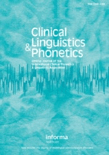
CLINICAL LINGUISTICS & PHONETICS
Transforming Insights into Practice in Speech-Language PathologyClinical Linguistics & Phonetics, published by Taylor & Francis Inc, is a leading peer-reviewed journal that occupies a pivotal role in advancing the fields of linguistics and speech-language pathology. With its ISSN 0269-9206 and E-ISSN 1464-5076, this journal has been instrumental since its inception in 1987, providing an esteemed platform for research that addresses the intersection of language and health. Holding a prestigious Q1 ranking in Linguistics and Language and a solid Q2 rank in Speech and Hearing as of 2023, it is well-regarded for its rigorous standards and impactful research contributions. The journal does not currently offer open access options, yet it remains accessible to a broad academic audience that values quality scholarship. By disseminating vital empirical studies and theoretical advancements, Clinical Linguistics & Phonetics not only enriches the academic discourse but also supports professionals seeking to enhance their practice based on the latest evidence in communication disorders and phonetic research.

BRAIN AND LANGUAGE
Bridging Insights in Psychology, Speech, and LanguageBRAIN AND LANGUAGE is a premier journal published by Academic Press Inc Elsevier Science, dedicated to fostering scholarly communication in the fields of Cognitive Neuroscience, Linguistics, Psychology, and Speech and Hearing. With its ISSN 0093-934X (Print) and 1090-2155 (Online), the journal has established a significant presence since its inception in 1974, continuing to provide valuable insights into the intricate relationship between brain function and language processing. This journal is highly regarded, boasting a 2023 ranking of Q1 in Linguistics and Language, reflecting its influential contributions to the field, alongside Q2 rankings in categories such as Cognitive Neuroscience and Experimental Psychology. With a rigorous peer-review process, it serves as an essential resource for researchers and professionals seeking to deepen their understanding of language mechanisms and their cognitive underpinnings. Despite not being an Open Access journal, BRAIN AND LANGUAGE ensures that its articles are widely accessible and of high quality, making it an indispensable platform for both emerging and established scholars aiming to expand the boundaries of research in language and cognition.

International Review of Pragmatics
Connecting Ideas, Bridging Disciplines in PragmaticsInternational Review of Pragmatics is a leading scholarly journal published by BRILL, renowned for its contribution to the fields of Communication, Linguistics and Language, and Psychology. With an ISSN of 1877-3095 and an E-ISSN of 1877-3109, this journal offers a rigorous platform for high-quality research and theoretical contributions that explore the complexities of pragmatics across various domains. Situated in the Netherlands, the journal is currently ranked in the Q2 quartile for both Communication and Linguistics, reflecting its substantial influence and academic excellence. The Scopus rankings further emphasize its importance, with percentile rankings in the 55th to 78th range across several relevant categories. Since its inception in 2014, the journal has consistently pursued the objective of fostering interdisciplinary dialogue and advancing scholarly discourse in pragmatics. Although the journal does not currently offer open access options, it remains committed to accessibility in academia through various channels. Researchers, professionals, and students alike will find valuable insights and contemporary discussions that propel the field forward, making International Review of Pragmatics an essential resource for those dedicated to understanding the intricacies of human communication.

Language Resources and Evaluation
Connecting academia with practical language insights.Language Resources and Evaluation, published by SPRINGER, is a leading peer-reviewed journal that focuses on the interdisciplinary field of language resources, evaluation, and their applications across various domains. With an impressive impact factor reflecting its academic rigor and influence in the fields of Education, Library and Information Sciences, Linguistics, and Language, this journal is categorized Q1 (2023) within these disciplines, underscoring its significance and high-quality contributions. Operating from the Netherlands, the journal has consistently delivered valuable insights since its inception in 1996, with ongoing publications continuing through 2024. Researchers and professionals are provided with open access options, fostering a global exchange of knowledge crucial for advancing the study and application of language technologies and resources. As it continues to rank exceptionally in Scopus, this journal serves as an essential platform for academics, offering a comprehensive understanding of the challenges and innovations in evaluating language resources.
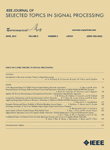
IEEE Journal of Selected Topics in Signal Processing
Connecting Researchers with Cutting-Edge Signal Processing DevelopmentsIEEE Journal of Selected Topics in Signal Processing is a premier academic publication dedicated to the advancement of knowledge in the field of signal processing. Published by IEEE-INST ELECTRICAL ELECTRONICS ENGINEERS INC, the journal boasts an impressive impact factor that places it in the top tier of its category; ranked Q1 in both Electrical and Electronic Engineering and Signal Processing for 2023. Given its esteemed standing, the journal serves as a vital resource for researchers, professionals, and students alike, providing cutting-edge insights and developments that shape the future of signal processing. The journal encompasses a wide array of topics relevant to the evolving landscapes of electrical engineering and computer science, with particular significance in innovative applications and methodologies. As a platform for disseminating high-quality research, this journal remains essential for those seeking to stay at the forefront of this dynamic field. You can explore the latest contributions and findings, benefiting from the journal's influential status in the realm of signal processing.
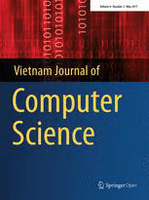
Vietnam Journal of Computer Science
Fostering collaboration for groundbreaking discoveries in AI and beyond.Vietnam Journal of Computer Science, published by World Scientific Publishing Co Pte Ltd, serves as a prominent platform for researchers and professionals in the rapidly evolving field of computer science. Launched as an Open Access journal in 2013, it aims to disseminate high-quality research across various subfields, including Artificial Intelligence, Computational Theory and Mathematics, Computer Vision, and Information Systems. With its ISSN 2196-8888 and E-ISSN 2196-8896, the journal provides valuable insights and contributes to the growing body of knowledge in computer science, particularly in Southeast Asia. Despite its relatively recent establishment, the journal has achieved significant rankings, including Q3 status in multiple categories and notable visibility in Scopus metrics, evidencing its commitment to fostering innovative research. This journal is essential for those looking to stay at the forefront of computational advancements and applications, particularly in Vietnam and beyond, facilitating an engaging dialogue among scholars and industry professionals.